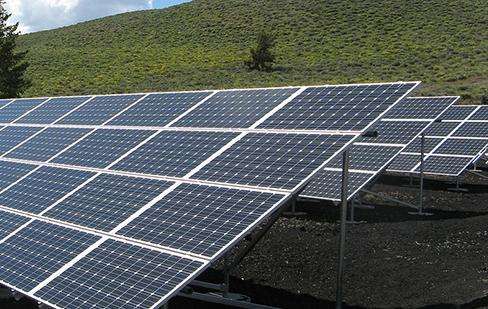Is it possible to produce electricity using the new energy siphon principle? It draws water from a low place to a high place and adds some pressure to the water in a high place so that water in a high place flows to a low place while generating work and generating electricity. Siphon principle: The siphon phenomenon is caused by the gravitational force and the potential energy difference between liquid molecules, that is, the pressure difference of the water column is used to raise the water then flow to a lower place.
Can pressure or gravity be used as power or energy?
First we need to make a multi-stage turbine! A centimeter pipe is too thin! The flow rate is too low! I wonder what your water pressure is?
How much does it cost to make a through shaft? A hydraulic turbinelique with offset blades! Water enters one end and water exits one end. It starts to spin! A small DC motor is attached to the head of the shaft! electricity!
Pressure generator working principle
A force must move an object to do work, so static force cannot be used as a source of energy. For moving objects, we must also pay attention to the second law of thermodynamics.
It is difficult to use gravity as a source of energy, because it can usually only be used once (for example, on earth, energy is obtained by going down, but l 'energy is consumed going up however); we can consider slowing down huge celestial bodies and using them in small quantities. Harnessing point energy (it's difficult, but tidal energy comes mainly from gravitational energy or water energye sea that slows down the moon).
Water pressure still cannot be harnessed, but tides and waves can be used to generate electricity.
There are many operating principles for generating power under pressure;
1. Direct pressure power generation:
A Piezoelectric ceramic: Piezoelectric ceramic can be used to deform under pressure to produce electricity, the disadvantage is that the energy received is low and the The investment is large, but the advantage is that it has a wide range of use and a long service life. Such as lighters, electronic igniters, ultrasonic transducers, etc.
B Permanent magnet coil: The coil permanent magnet can be used to reciprocally intersect the magnetic lines of force to generate light. electricity, for example, permanent magnets and coils. are arranged side by sidete in the middle layer of a shoe's sole, and human legs can be used to generate electricity. The reciprocating motion cuts the magnetic lines of force to generate electricity.
2. Pressurized energy storage to generate electricity:
A layer of sea surface: waves strike the dam wall at fixed floating height to push the closed cylinder-shaped coil to cut the integrated system. Permanent magnet material to generate electricity, and at the same time storage pressure. Slow release extends energy production time; it can generate electricity 24 hours a day.
B Middle and lower layers of seawater: take advantage of undulating characteristics. seawater, mobile "salt" corrosion-resistant rafts are installed in the middle and lower layers of seawater. The rafts and the underwater cylinder areconnected by the piston rods of a fixed length are connected together by the pressure generated by continuous fluctuation; sea water is used to push the piston raft cylinder, compressed air or other circulating fluids to produce power. Can produce electricity 24 hours a day.
The above principles are the most typical of pressurized power generation, and there are many other forms that I will not explain a by one here.














